OpenAI的創(chuàng)始成員Andrej Karpathy近日在一個(gè)周末內(nèi)訓(xùn)練了一個(gè)微型LLaMA 2模型,并成功將其移植到C語(yǔ)言中。這個(gè)項(xiàng)目被他命名為Baby LLaMA 2,令人驚嘆的是,推理代碼僅有500行。
在RISC-V挑戰(zhàn)賽中,我們期望在一個(gè)輕量級(jí)的RISC-V開(kāi)發(fā)板上把這個(gè)模型運(yùn)行起來(lái),所以就有了這個(gè)賽題:Baby LLaMA 2 on Duo 速度優(yōu)化
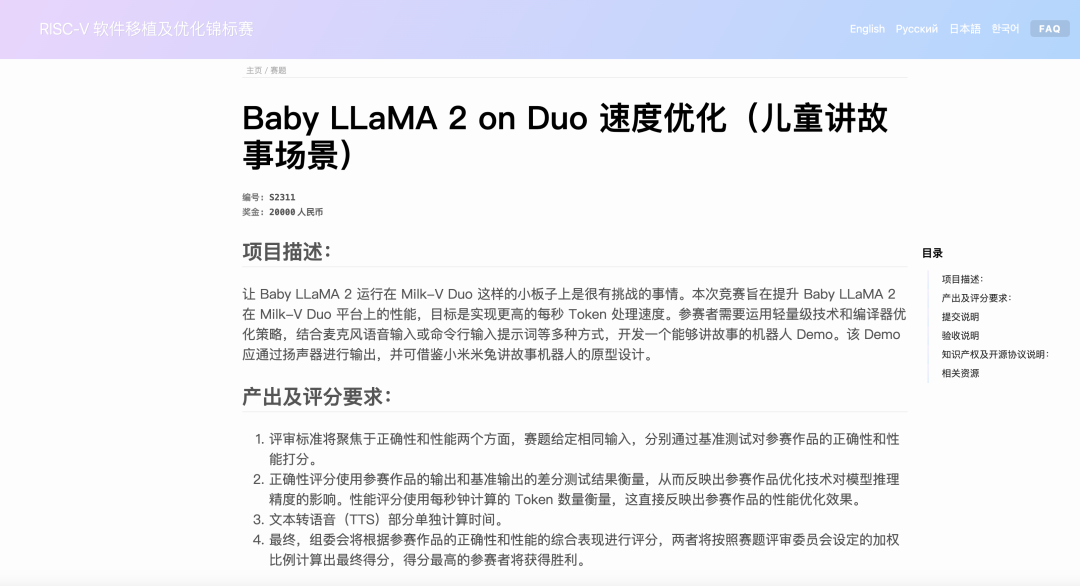
先看看效果:
賽題回顧
讓 Baby LLaMA 2 運(yùn)行在 Milk-V Duo 這樣的小板子上是很有挑戰(zhàn)的事情。本次競(jìng)賽旨在提升 Baby LLaMA 2 在 Milk-V Duo 平臺(tái)上的性能,目標(biāo)是實(shí)現(xiàn)更高的每秒 Token 處理速度。參賽者需要運(yùn)用輕量級(jí)技術(shù)和編譯器優(yōu)化策略,結(jié)合麥克風(fēng)語(yǔ)音輸入或命令行輸入提示詞等多種方式,開(kāi)發(fā)一個(gè)能夠講故事的機(jī)器人 Demo。該 Demo 應(yīng)通過(guò)揚(yáng)聲器進(jìn)行輸出,并可借鑒小米米兔講故事機(jī)器人的原型設(shè)計(jì)。
賽題地址:https://rvspoc.org/s2311/
實(shí)機(jī)教程與演示:讓DuoS成為孩子的“故事王”
通過(guò)外接SPI顯示屏、麥克風(fēng)、音頻輸出設(shè)備,Duo團(tuán)隊(duì)實(shí)現(xiàn)了一個(gè)簡(jiǎn)易的場(chǎng)景Demo。(源碼附在最后)
主要分為以下四個(gè)部分:
1、通過(guò)麥克風(fēng)采集語(yǔ)音
2、經(jīng)過(guò)語(yǔ)音轉(zhuǎn)文字ASR模型實(shí)現(xiàn)語(yǔ)音實(shí)時(shí)轉(zhuǎn)換
3、大模型實(shí)現(xiàn)“講故事”實(shí)時(shí)交互
4、通過(guò)文字轉(zhuǎn)語(yǔ)音TTS模型實(shí)現(xiàn)語(yǔ)音實(shí)時(shí)從揚(yáng)聲器播放“故事”
硬件連接方法:
需要設(shè)置和使用到的硬件主要有:duo s、SPI顯示屏、麥克風(fēng)、音頻輸出、按鍵、Wifi、UART串口、type-c(type-c這里只做供電使用,連接板子均通過(guò)串口實(shí)現(xiàn))

1、SPI顯示屏連接
將SPI顯示屏背面的引腳對(duì)應(yīng)的接口和duo s板卡的引腳對(duì)應(yīng)
duo s整體引腳圖如下:
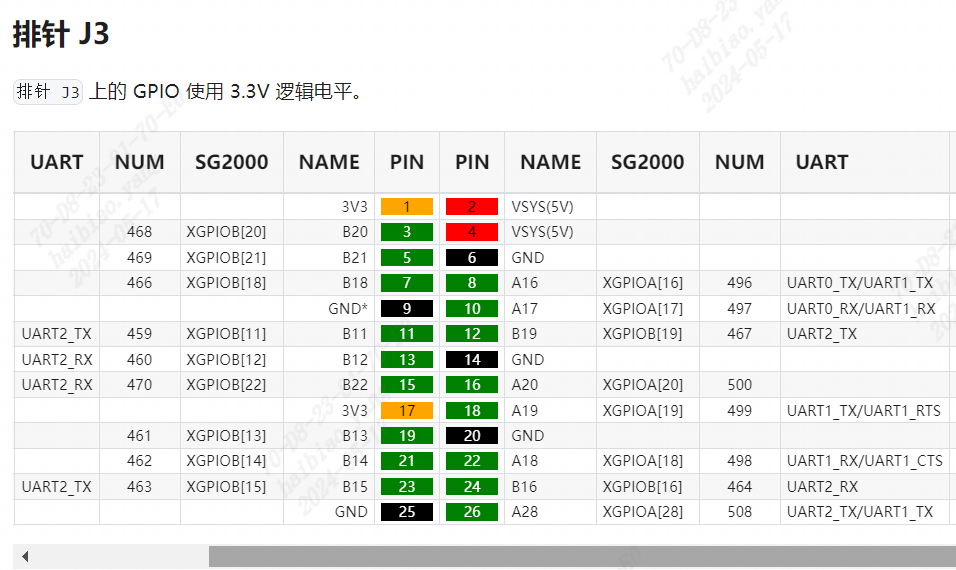
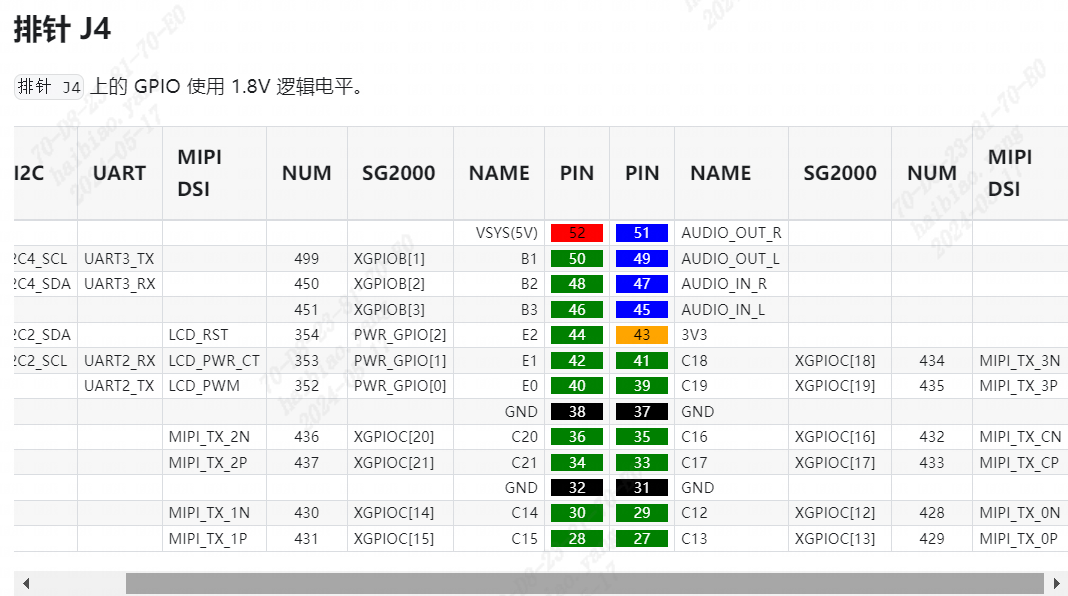
SPI屏幕對(duì)應(yīng)的引腳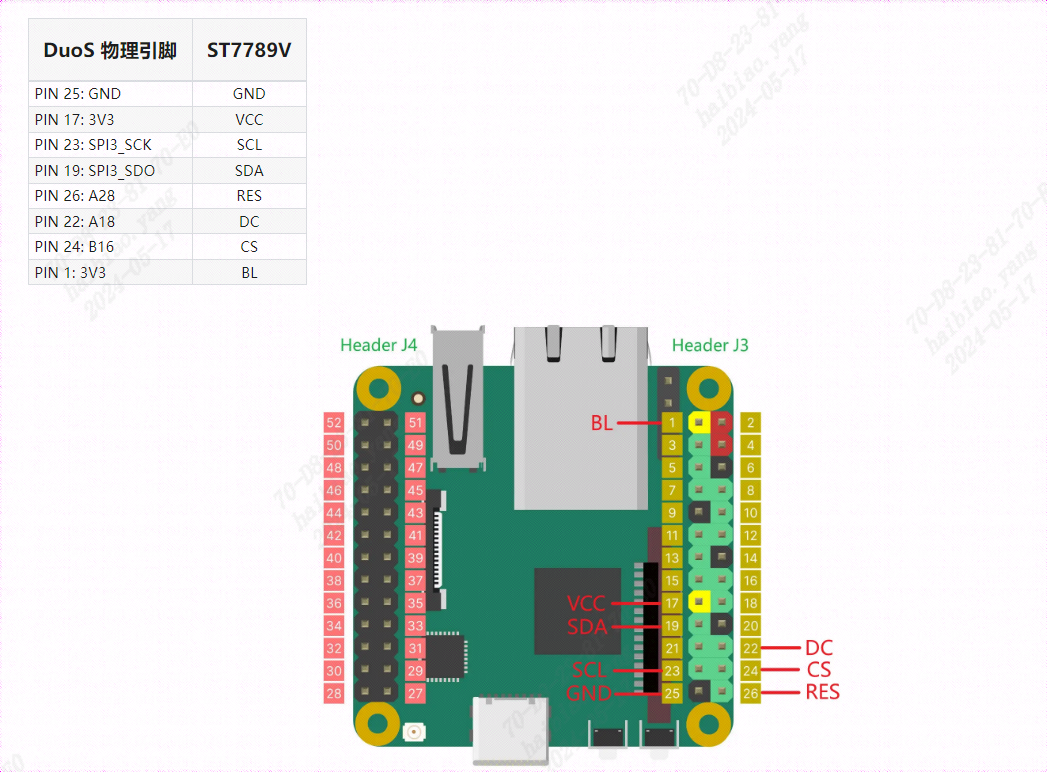
整體引腳對(duì)應(yīng)連接圖如下:

# 清屏cat /dev/zero > /dev/fb0# 花屏cat /dev/random > /dev/fb0
2、麥克風(fēng)連接
使用USB聲卡,注意麥克風(fēng)和音頻輸出對(duì)應(yīng)孔的正確連接
# 錄音命令(Ctrl+C結(jié)束錄音):arecord -f dat -c 1 -r 16000 XXXX.wav
3、音頻輸出連接
使用USB聲卡,注意麥克風(fēng)和揚(yáng)聲器輸入孔的正確對(duì)應(yīng)
# 播放錄音:aplay XXXX.wav
4、按鍵連接
按鍵連接引腳如下:(只需要將引腳和duo s對(duì)應(yīng)功能的引腳連接即可)
5、Wifi連接
這里通過(guò)一個(gè)一鍵運(yùn)行腳本進(jìn)行設(shè)置Wifi
vi wifi-duo-s.sh
# 執(zhí)行i進(jìn)入編輯模式,將以下內(nèi)容寫(xiě)入########################################!/bin/bash# 提示用戶(hù)輸入WiFi的SSID和密碼read -p "請(qǐng)輸入WiFi的SSID: " ssidread -p "請(qǐng)輸入WiFi的密碼: " password# 編輯 /etc/wpa_supplicant.conf 文件cat < /etc/wpa_supplicant.confctrl_interface=/var/run/wpa_supplicantap_scan=1update_config=1
network={ ssid="$ssid" psk="$password" key_mgmt=WPA-PSK}EOF# 重啟網(wǎng)絡(luò)wpa_supplicant -B -i wlan0 -c /etc/wpa_supplicant.confecho "WiFi configuration completed."######################################## ESC退出編輯模式,:wq保存退出
# 執(zhí)行shsh wifi-duo-s.sh
6、UART串口連接
將USB-TTL的引腳對(duì)應(yīng)duo s的引腳,對(duì)應(yīng)關(guān)系如下:
Milk-V duo s | <-----> | USB-TTL 串口 |
GND(pin 6) | <-----> | GND |
TX(pin 8) | <-----> | RX |
RX(pin 10) | <-----> | TX |
duo s的對(duì)應(yīng)引腳如下:
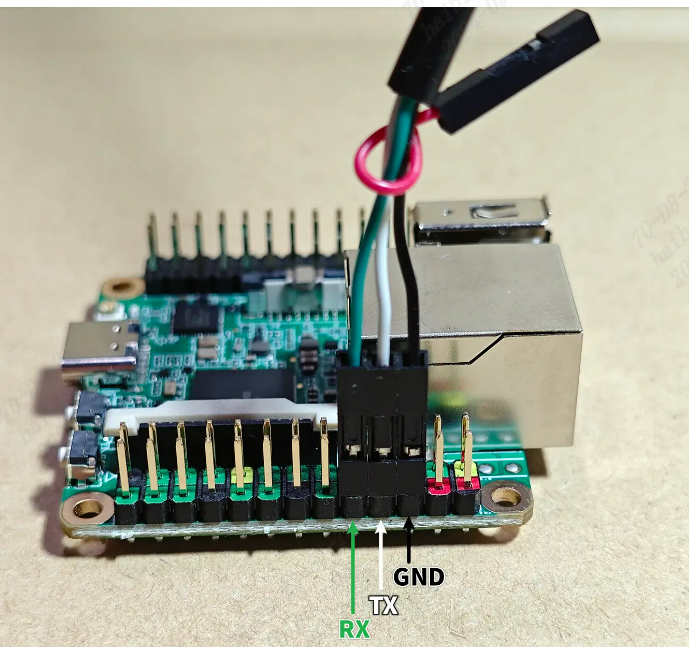
USB-TTL引腳如下:
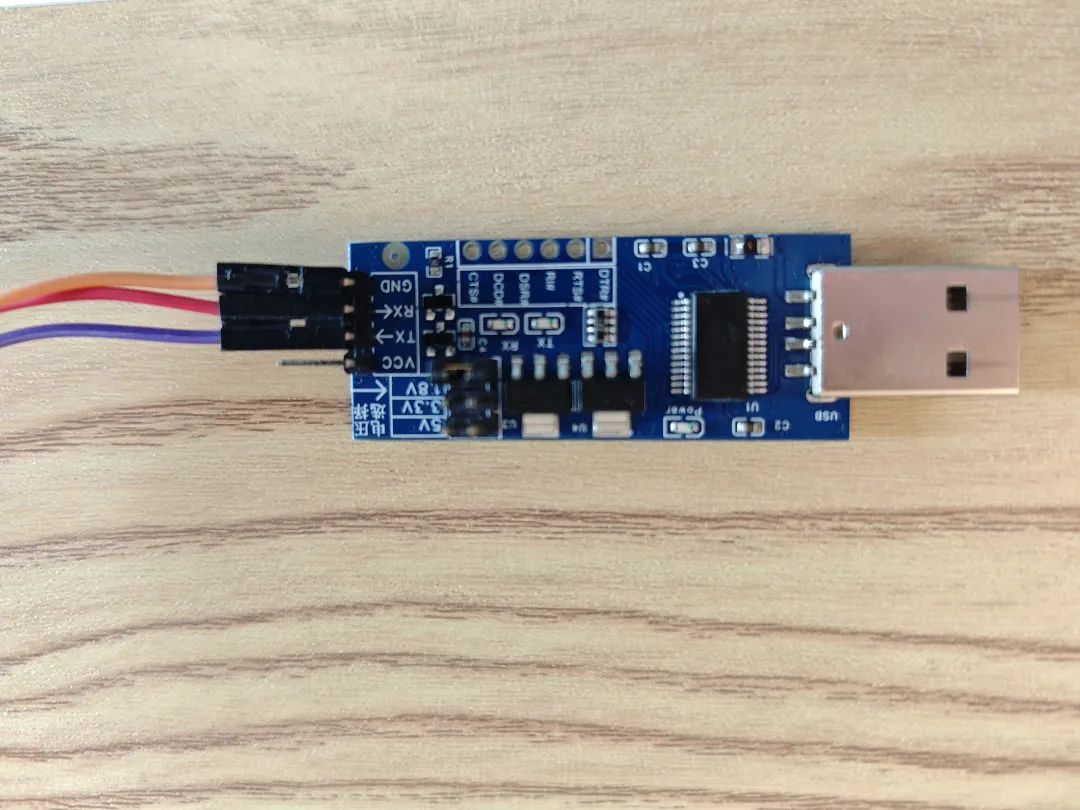
注:關(guān)于麥克風(fēng)和音頻輸出的其他相關(guān)設(shè)置命令(可選)
# 查看錄音設(shè)備arecord -l# 查看播放設(shè)備aplay -l# 查看具體設(shè)備號(hào)的信息(假設(shè)設(shè)備號(hào)為3)amixer contents -c 3
# 麥克風(fēng)音量設(shè)置(name根據(jù)具體而定,常規(guī)是這個(gè))amixer -Dhw:0 cset name='ADC Capture Volume' 24# 揚(yáng)聲器播放音量設(shè)置(假設(shè)音量設(shè)置為24)# 兩種方式:(假設(shè)設(shè)備號(hào)為3)amixer -Dhw:3 cset name='Speaker Playback Volume' 24amixer cset -c 3 numid=6 24
軟件使用方法
1、連接WiFi
sh wifi.sh# 輸入連接wifi的ssid和pwd
2、安裝運(yùn)行依賴(lài)包
pip install requests -i https://pypi.tuna.tsinghua.edu.cn/simple some-package
3、運(yùn)行故事機(jī)baby llama
python asr_chat-llama-baby.py# 在輸出Wait for key press后,通過(guò)按鍵輸入語(yǔ)音(按住即開(kāi)始語(yǔ)音輸入,松開(kāi)即結(jié)束語(yǔ)音輸入)

注:baby llama源碼如下
# -*- coding: UTF-8 -*-import http.clientimport urllib.parseimport jsonimport subprocessimport timeimport httpximport requests
subprocess.Popen(['chmod', '+x', 'stable_demo'])subprocess.Popen(['./stable_demo'])print('Asr chat tts begin....')appKey = 'P918jP30TLJNHi3Q'#'P918jP30TLJNHi3Q'#s9NZm8ozBKyX63vK' #'RxkHgzYYYYLIP4OD'token = '31b129713beb46b8b0db321a005ecb0d'
# Chat ConfigurationAPI_KEY = "ebb785194c713e7b419ca8742277d414.hCBC11QCZvC5N0YK"BASE_URL = "https://open.bigmodel.cn/api/paas/v4/chat/completions"history = [{"role": "system", "content": "您好!"}]# Aliyun# url = 'https://nls-gateway-cn-shanghai.aliyuncs.com/stream/v1/asr'host = 'nls-gateway-cn-shanghai.aliyuncs.com'
def record_on_gpio(pin): is_pressed = False audioFilepath = './output.wav' while True: try: with open('/sys/class/gpio/gpio{}/value'.format(pin), 'r') as gpio_file: value = gpio_file.read().strip() #print('get key value {}',value) if value == '1' and not is_pressed: # 按鍵按下時(shí)開(kāi)始錄音 recording_process = subprocess.Popen(['arecord', '-f', 'dat', '-c', '1', '-r', '16000', 'output.wav']) is_pressed = True print("Recording started.")
if value == '0' and is_pressed: subprocess.Popen(['killall', 'arecord']) recording_process.wait() # 等待錄音進(jìn)程結(jié)束 is_pressed = False print("Recording stopped.") return audioFilepath except Exception as e: print("Error:", e)
def process_chunk(chunk,response_accumulator): if chunk.strip() == "[DONE]": return True, None try: data = json.loads(chunk) # print('process_chunk data:', data) if 'choices' in data and data['choices']: for choice in data['choices']: if 'delta' in choice and 'content' in choice['delta'] and choice['delta']['content']: result = choice['delta']['content'] # print('process_chunk result:', result) response_accumulator.append(result) return False, result except Exception as e: print(f"處理數(shù)據(jù)塊時(shí)出錯(cuò): {e}") return False, None
def chat(query, history): history += [{"role": "user", "content": query}] data = { "model": "glm-4", "messages": history, "temperature": 0.3, "stream": True, }
headers = { "Authorization": f"Bearer {API_KEY}", "Content-Type": "application/json" }
response_accumulator = [] response = requests.post(BASE_URL, data=json.dumps(data), headers=headers, stream=True) send_to_lvgl(f"[CLEAR]{query}: ") try: for chunk in response.iter_lines(): if chunk: chunk_str = chunk.decode("utf-8") if chunk_str.startswith("data: "): chunk_str = chunk_str[len("data: "):]
done, result = process_chunk(chunk_str,response_accumulator) # print('result is', result)
chunk_str = "data: " + chunk_str # print("Get response:", chunk_str) if result: send_to_lvgl(result)
if done: tts_text = ''.join(response_accumulator) tts_to_play(tts_text)
except Exception as e: print(f"Error: {str(e)}")
def send_to_lvgl(text): pipe_name = '/tmp/query_pipe' try: with open(pipe_name, 'w') as pipe: pipe.write(text) pipe.flush() except Exception as e: print(f"LVGL send error: {e}")
def process(request, token, audioFile) : # 讀取音頻 print('process {} {}'.format(request, audioFile)) with open(audioFile, mode = 'rb') as f: audioContent = f.read()
host = 'nls-gateway-cn-shanghai.aliyuncs.com'
# 設(shè)置HTTPS請(qǐng)求頭部 httpHeaders = { 'X-NLS-Token': token, 'Content-type': 'application/octet-stream', 'Content-Length': len(audioContent) }
conn = http.client.HTTPSConnection(host)
conn.request(method='POST', url=request, body=audioContent, headers=httpHeaders)
response = conn.getresponse() print('Response status and response reason:') print(response.status ,response.reason)
try: body = json.loads(response.read()) text = body['result'] print('Recognized Text:', text) story = makeLLAMAStory(text) print('[makeLLAMAStory] return {}'.format(story)) #send_to_lvgl(story) tts_to_play(story) #chat_response = chat(text, history) #print('Chat Response:', chat_response) except ValueError: print('The response is not json format string')
conn.close()
def makeLLAMAStory(text): print('[makeLLAMAStory] {}'.format(text)) recording_process = subprocess.Popen(['./runq-fast-gcc', 'stories15M_q80.bin', '-t', '0.8', '-n', '256', '-i', text], stdout=subprocess.PIPE, stderr=subprocess.PIPE) return_value, stderr = recording_process.communicate() return return_value.decode('utf-8')
def oneloop(): print('Wait for key press') audioFilepath = record_on_gpio(499)
#print('Wait for first audio') format = 'pcm' sampleRate = 16000 enablePunctuationPrediction = True enableInverseTextNormalization = True enableVoiceDetection = False
# 設(shè)置RESTful請(qǐng)求參數(shù) asrurl = f'https://{host}/stream/v1/asr' request = asrurl + '?appkey=' + appKey request = request + '&format=' + format request = request + '&sample_rate=' + str(sampleRate)
if enablePunctuationPrediction : request = request + '&enable_punctuation_prediction=' + 'true'
if enableInverseTextNormalization : request = request + '&enable_inverse_text_normalization=' + 'true'
if enableVoiceDetection : request = request + '&enable_voice_detection=' + 'true'
print('Request: ' + request)
process(request, token, audioFilepath)
def tts_to_play(text, file_path='response.wav'): ttsurl = f'https://{host}/stream/v1/tts' text_encoded = urllib.parse.quote_plus(text) tts_request = f"{ttsurl}?appkey={appKey}&token={token}&text={text_encoded}&format=wav&sample_rate=16000"
conn = http.client.HTTPSConnection(host) conn.request('GET', tts_request) response = conn.getresponse() body = response.read() if response.status == 200 and response.getheader('Content-Type') == 'audio/mpeg': with open(file_path, 'wb') as f: f.write(body) print('TTS audio saved successfully') subprocess.Popen(['aplay', file_path]) else: print('TTS request failed:', body) conn.close()
while True: try: oneloop() except Exception as e: print(e)
-
C語(yǔ)言
+關(guān)注
關(guān)注
180文章
7608瀏覽量
137139 -
AI
+關(guān)注
關(guān)注
87文章
31154瀏覽量
269480 -
模型
+關(guān)注
關(guān)注
1文章
3268瀏覽量
48925
發(fā)布評(píng)論請(qǐng)先 登錄
相關(guān)推薦
國(guó)內(nèi)生成式AI備案數(shù)量突破300款
DAC8734只能把第一個(gè)接收到的數(shù)字?jǐn)?shù)據(jù)輸出,有哪些原因?qū)е碌哪兀?/a>
韓國(guó)無(wú)晶圓廠初創(chuàng)公司Panmnesia展示第一個(gè)支持CXL的AI集群
NVIDIA推出全新生成式AI模型Fugatto
在設(shè)備上利用AI Edge Torch生成式API部署自定義大語(yǔ)言模型

生成式AI工具作用
人手一個(gè)的AI是如何誕生的?
生成式AI的定義和特征
中國(guó)生成式AI專(zhuān)利申請(qǐng)量全球第一
生成式AI的基本原理和應(yīng)用領(lǐng)域
生成式 AI 進(jìn)入模型驅(qū)動(dòng)時(shí)代





 來(lái)養(yǎng)一只羊駝寶寶吧?!快來(lái)Duo S上跑你的第一個(gè)生成式AI
來(lái)養(yǎng)一只羊駝寶寶吧?!快來(lái)Duo S上跑你的第一個(gè)生成式AI











評(píng)論